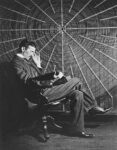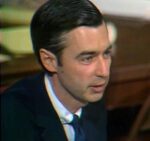Edmund Hillary was the stereotypical country bumpkin. Hailing from rural New Zealand, this shy, gangly beekeeper stepped out of the shadows to take on the greatest physical challenge of them all – climbing the world’s highest mountain. Through guts, grit and determination he managed to, as he famously said, ‘knock the bastard off.’ From there he used his new found fame as a platform to improve the lives of the Nepalese people who he had developed an affinity for, leaving behind a legacy that endures beyond the record books. This week’s Biographics explores the life and accomplishments of the first man to climb Mount Everest, sir Edmund Hillary.
Formative Years
Edmund Percival Hillary was born on July 20th, 1919 in Auckland, New Zealand. Shortly after his birth his father, Percival Augustus, was allocated a land grant in recognition of his service during the First World War. As a result the family, which included 3 year-old June, moved south to the farming settlement of Tuakau. A younger brother, Rex, soon came along. June later described the three of them as follows . . .
Ed had the brains, Rex had the looks and I was the girl.
According to Ed’s own recollections, it was his mother who held the family together. She managed the money and made sure the kids were OK. This was no easy task. The Hillary children had an adventurous streak that saw them pushing everything to the limit. Once, Ed and Rex swapped bicycles, with Ed riding one that was way too small for him. Rex, however, found it hard to control the larger bike. Still, knowing that Ed would be chasing him he went as fast as he could. Turning a corner, he collided with a car, bouncing off the bonnet and bouncing off the road. The driver was terrified that he had killed Rex. But Ed was merely terrified of the beating he knew his father would give him when he saw the state of his bike.

Although Percy was a pacifist, he was prone to fits of rage. They were usually directed at his oldest son. Even though he feared the beatings, the stubborn Ed was determined to never give his father the satisfaction of admitting he had done anything wrong.
Despite the competitive bond with his brother, Ed’s early years were filled with loneliness. Throughout his primary years he didn’t make any friends. While other kids were out playing, he filled his time with extra tuition, which allowed him to enter high school two years ahead of his peers. This only made his social situation worse. He was now shorter and younger than all the other kids. High school meant that he had to take the train to prestigious Auckland Grammar School and rub shoulders with the children of the wealthy. This intensified his lack of self confidence and social awkwardness even further.
In his later years Ed often recounted an incident that occurred during his first week at Auckland Grammar that had a deep impact on him. He turned up for his first gym class along with his classmates. The teacher surveyed his new students and then, fixing his gaze on Ed, said…
What have they sent me?
He then went on to catalog a long list of what he saw wrong with Ed. Finally, he told the humiliated boy to get against the wall with the other misfits.
“People do not decide to become extraordinary. They decide to accomplish extraordinary things.” Sir Edmund Hillary
Ed recalls that this incident marked the beginning of a sense of inferiority about his looks which would remain with him for most of his life.
Ed found the companionship that he lacked with other humans in books. After wading through the typical teenage literary attractions of the day, such as Edgar Rice Burroughs and H. Rider Haggard, he discovered books on mountaineering. They fascinated him and he devoured everything on the subject he could get his hands on.
Percy ran the local newspaper in Tuakau and had a sideline business as a beekeeper. In 1935, Ed’s last year at Auckland Grammar, the family moved to the inner Auckland suburb of Remuera. Beekeeping now became the family’s main source of income. The change meant that Ed no longer had to spend hours on the train each day.
A Taste of the Mountains
From college, Ed went on to the University of Auckland, where he studied mathematics and science. He also joined the University tramping club. With his long stride and abundant stamina he soon became a star bush walker. He also took lessons in boxing and jiu-jitsu, but head-to-head combat was not his style.
In 1938, Ed who had been struggling academically, dropped out of University and joined his father in the beekeeping business. His stamina, endurance and physical strength were ideally suited for the job. It was hot, physically demanding work, and in summer he would carry out his duties wearing only shorts, a hat and a veil. Every day he would have to endure up to 300 bee stings.
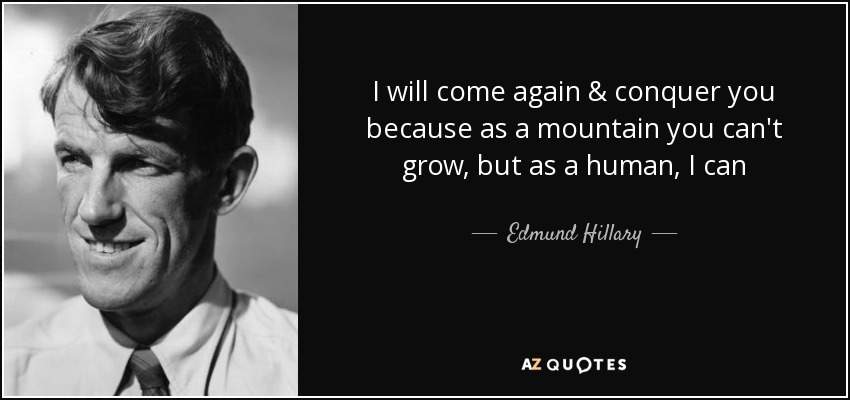
Not long after Ed began working on the bee farm, his parents converted to a New Age religious movement called ‘Radiant Living.’ The group had beliefs which were not far removed from those of Christian Scientists. Ed and his brother Rex soon became converts also.
When war broke out in 1939, it appeared inevitable that both Hillary boys would be drafted into the New Zealand armed services. But Percy, the pacifist, was determined to prevent that from happening. He managed to get himself and Ed off the hook by relying on a provision that allowed exemption for reserved occupations, including beekeeping. However, Percy did all of this without telling Ed, who was not happy with his father’s meddling.
Percy soon discovered that only one exemption was allowed per family. Ed’s exemption meant that Rex would have to go to war. It just so happened, though, that Rex, unlike Ed, was a conscientious objector. Ed would have been happy to sign up. But Rex wasn’t – he followed his conscience and spent the next four years in a detention camp.
For three years Ed fumed silently that his father had prevented him from fulfilling what he saw as his patriotic duty. Finally, in 1944 he joined the Royal New Zealand Air Force.
It was during his training as a flight navigator in New Zealand’s South Island that Ed encountered towering mountains. He managed to get in a few solo climbs. Then he came across the 2884 meter snow capped Mount Tapuaenuku. He became determined to make an ascent and arranged for a 3-day leave.
He arranged to climb the mountain with a partner, but the man pulled out at the last minute. Ed decided to go it alone and a friend took him part of the way on his motorbike. Then he walked 8 kilometers to a farm, where he stayed overnight. The next day he walked another 24 kilometers, overnighted at another farm, and then set off up the mountain. He reached the top without any trouble and returned safely. The next day he walked another 32 kilometers before receiving a lift.
Ed was overjoyed at this experience. He had knocked off his first mountain – and it felt great.
A Close Escape
Returning to his war service. Ed found himself stationed to the Pacific Islands. Years later he would recall coming across a small Fijian boy who came up and begged for a piece of bread. Experiences like this formed the catalyst for his great humanitarian work in later life.
Ed never came near combat, though he did contract malaria. His war nearly ended in disaster when a full petrol tank in his plane fell and burst into flames. The plane came down in the ocean. Before Ed, who was not wearing a shirt, could jump clear of the blazing craft, a wave knocked him of his feet and he fell into the flames. He then managed to roll off into the sea.
Ed suffered second degree burns. The pain was made worse by having to swim 450 meters and then walking 800 meters under the blazing sun before reaching help. He was taken to hospital in Guadalcanal where he was shot full of morphine and antibiotics. He was told that he would be in bed for months before achieving a full recovery. However, within two weeks he was up and walking around. He became so restless and bored that he badgered his doctors to allow him to recover at home in Auckland. They finally relented and he was discharged from the air force and sent home.
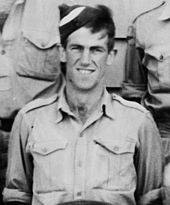
When Ed got home he didn’t intend to lie around but, rather to get to work. But, when he discovered that his father had taken on other workers and had no opening for him on the bee farm, he moved to the South Island in search of new opportunities. He also joined the New Zealand Alpine Club. Over the next couple of years he learnt the climber’s craft as he took on the many mountains peaks of the South Island.
Ed climbed with others, but he always wanted to be first to the top. In 1949, older sister June got married. Percy had enjoyed an especially good honey season and he paid for Ed to travel with his parents to Europe. Ed took every opportunity to take on European peaks, including the Eiger.
Everest on the Horizon
While he was in Europe, Ed received a letter from a former climbing partner by the name of George Lowe informing him that plans were underway for a New Zealand party to undertake a trek of the Himalayas. They intended to explore the possibility of tackling the world’s highest peak – Mount Everest, something that had never been successfully done before.
Lowe wanted to know if Hillary was interested?
The answer was an unequivocal yes.
In mountaineering terms, there was no greater challenge than a successful ascent of Mount Everest, which towers 8848 meters from the ground. Many climbers had died trying to get there, most famously the British climber George Mallory in 1924.
A turning point in the history of attempts on Everest occured in 1950, when the Nepalese government agreed to allow parties to attempt the mountain from Nepal on the southern side. Previous expeditions had attacked from Tibet, on the northern side of the mountain. The Nepalese government decided to let a different country every year have a go.
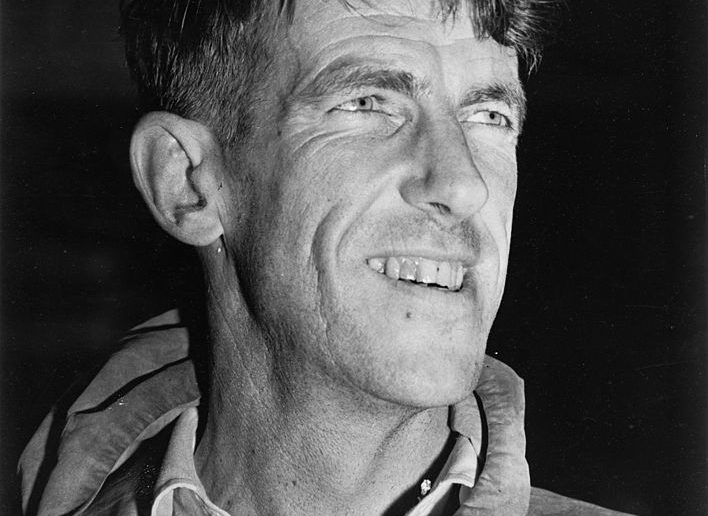
It just so happened that, in addition to the New Zealand group, a party of British climbers were also planning an assault on Everest. The British group sent a letter to the New Zealanders suggesting that they join up. The invitation, however, was only for two climbers. The question now became which two?
After some heated discussion it was decided that Ed, the acknowledge superior climber, and Earle Riddiford would be the token New Zealanders on the British expedition. Rather than a concerted effort to reach the summit, this expedition was more of an exploratory probe. While climbing with Shipton, the expedition leader, Hillary came across a hidden valley that appeared to provide a previously unknown route to the top. The group split up and agreed to return the next year.
That following year, 1952, however, was assigned to a Swiss expedition attempt to climb Everest. The British, with their New Zealand contingent, would have to wait until 1953.
Going For It
Planning for the 1953 assault began in a small office in London. It was to be led by Eric Shipton, who believed that the journey should be made by a small team with basic supplies. But Shipton had only just begun choosing his team when there was a sudden change of plan. Previous attempts to climb Everest by small teams had failed. It was decided that this time they would use a big team with the latest equipment and plenty of supplies. A new leader, John Hunt, was appointed.
In March of 1953, the expedition team began to arrive in Kathmandu. The team got ready to make their way east to the Himalayas and Mount Everest. Hillary was one of fourteen climbers and more than 30 Nepalese sherpas who made up the team.
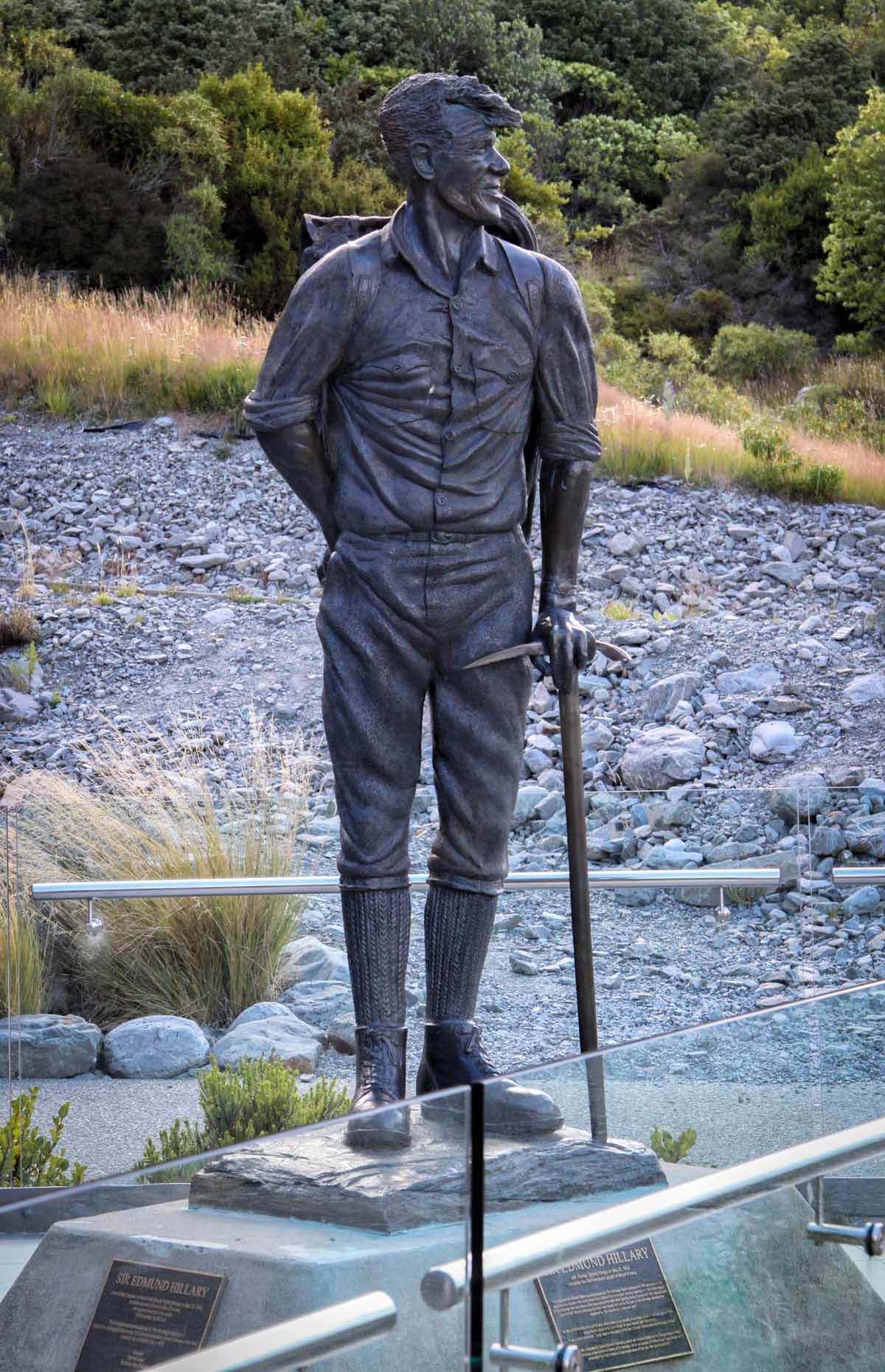
Nearly 400 people set off from Kathmandu on March 10th. More than 350 of them were locals who were hired to carry supplies to the site of the first camp. For 17 days they walked through the Nepalese countryside until they arrived at Base Camp. There they stayed for three weeks, planning the climbs to come. They practiced with their climbing gear on local cliffs and tried to get used to the thin air of the high mountains.
In early April, Base Camp was moved from near Tengboche monastery to a second main base, the Lake Camp, higher up by a lake on a glacier. The first big challenge for the leading climbers came on April 13th. Four men, including Hillary, were selected by Hunt to explore a region known as the Khumbu icefall.This was an area of house sized blocks of cracked and creaking unstable ice. The climbers needed to find a safe route for the Nepalese Sherpas who were to follow, bringing supplies. A number of camps were set up through the icefall. The lead climbers pressed through the Khumbu icefall and set up an advanced Base camp above it.
By now Hillary had impressed all with his boundless energy and exceptional strength. Early on the morning of April 26th, Ed teamed up with sherpa Tenzing Norgay for the first time. Their task was to reach an advance camp that was set up during the previous year’s Swiss expedition. Roped together, the two men waded through deep slushy snow that had softened with the sun’s rays. Despite being hit and thirsty, the pair worked well together. Arriving at the camp they fund an unexpected treat – the Swiss had left behind some supplies, which included delicious cheese.

On the way back to base camp, Hillary boasted to Norgay that he could make it back within an hour. All went well until he decided to leap across a crevasse. He just reached the other side, but the edge of the crevasse broke off. Suddenly he was slipping downwards. His fate was in the hands of his partner.
Fortunately, Norgay was a brilliant climber. He quickly grabbed hold of the pole and used all of his skill, strength and experience to help Hillary climb up the side of the crevasse.
Returning to base camp, the bond between the two men had been strengthened by Hillary’s narrow escape. Hillary wrote to his parents that he and Norgay had become the ‘tigers’ of the campaign on that day. They had shown the strength, courage, and fearlessness that they hoped would take them to the top of Everest.
By late May the lead climbers had scaled the Lhotse face to the South Col, a flat area that is one of the nastiest places on Everest. Here they set up their Seventh camp. From here it was a final push to the summit. Two other climbers were selected to make the first push but they only made it to the lower south summit.
Victory
On the morning of May 28th, five more climbers set off from the South Col. Three lead climbers were there to cut steps for the two who had been picked to go all the way – Hillary and Tenzing. By nightfall the helpers had turned back – now it was up to the two of them.

Hillary and Tenzing pitched their tent below Everest’s South Summit, on an uneven ice ledge. At 6:30am on May 29th the began their final journey to the summit. It was a harrowing effort. While climbing a steep slope, the surface snow shifted, carrying Hillary with it. Then, with their oxygen running low, the two men came to a rock face. It was too slippery to try and climb hard rock in the crampons fitted to their boots. There had to be another way.
Hillary saw a cornice attached to the rock. It had started to come away, leaving a crack stretching upwards between the rock and ice. He crawled into the crack. Grasping the rock in front of him, he pulled himself further in. Jamming his crampons into the ice, he pulled himself through the crack at the top of the cornice and signaled Norgay to follow.
“Nobody climbs mountains for scientific reasons. Science is used to raise money for the expeditions, but you really climb for the hell of it.” Sir Edmund Hillary
They now continued along the ridge, hoping the summit would come into view. Just as Hillary doubted if they could go on, he looked up and saw a snowy peak that dropped away on all sides. Hillary himself later recalled . . .
A few more whacks of the ice axe, a few more weary steps, and we were on the summit.
It was now time to celebrate, take photographs and appreciate the best view in the world.
The news that Everest had finally been conquered reached the outside world on June 2nd. Ed was lionized as the beekeeper from rural New Zealand who had done the impossible. From Nepal he flew to London where he was appointed a Knight Commander of the British Empire by the newly crowned Queen Elizabeth II. He returned to New Zealand as a conquering hero, with thousands flooding the streets to get a glimpse of him. For the awkward and shy young man that he was, this unexpected adulation was hard to get used to.
A few months after conquering Everest, Hillary made another conquest – he won over and married Louise Mary Rose. This time, however, he needed help – he was so shy that he had to rely on his future mother-in-law to propose on his behalf. The union was to produce three children, Peter, Sarah and Belinda. Peter would become a climber just like his father, reaching the summit of Everest himself in 1990.

Both Hillary and Tenzing continued climbing, with Hillary tackling ten more Himalayan peaks over the next decade. On January 4th, 1958 he led an expedition to Antarctica, following the route of Robert Falcon Scott in 1912. The New Zealanders became the first to make the trek in motorized vehicles, with Ed riding a tractor.
Hillary became an unofficial ambassador for New Zealand. In the 1970’s he commentated on several Air New Antarctic sightseeing flights. On November 28th, 1979 he was booked to work on Flight 901, but had to renege due to other work commitments. That flight crashed into Mount Erebus in Antarctica, with all on board being killed.
Philanthropy – and Final Rest
As the years went by, Hillary returned increasingly to Nepal. There he became absorbed in programs of fundraising and building work for Sherpa communities. In 1960 he established the Himalayan Trust, which was responsible for the building of many schools and hospitals throughout remote Himalayan areas. In 1975, tragedy struck when his wife and daughter, Belinda, were killed in a plane crash while flying out to join him in Nepal. Devastated, Hillary immersed himself in his building work. But this became increasingly difficult as he was struck with bouts of altitude sickness.fun
Hillary’s health deteriorated in the late 1990’s. On January 11th, 2008 his heart finally gave out. He died at the Auckland City Hospital of cardiac arrest. His country went into mourning and a state funeral was held on January 22nd. Two months later a thanksgiving service was held in his honor at St. George’s Chapel in Windsor Castle. Standing guard outside the chapel were Gurkha soldiers from Nepal, showing their respect for a man who had given much to improve the lot of their people.


